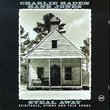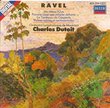| All Artists: Charles Koechlin, Ernest Chausson, Erik Satie, Claude Debussy, Maurice Ravel, Gabriel Faure Title: Lee Konitz & the Axis String Quartet Members Wishing: 1 Total Copies: 0 Label: Palmetto Records Original Release Date: 9/12/2000 Release Date: 9/12/2000 Genres: Jazz, Pop, Classical Styles: Cool Jazz, Modern Postbebop, Vocal Jazz, Bebop, Vocal Pop, Chamber Music, Historical Periods, Modern, 20th, & 21st Century, Instruments, Strings Number of Discs: 1 SwapaCD Credits: 1 UPCs: 753957206420, 075395720642 |
Search - Charles Koechlin, Ernest Chausson, Erik Satie :: Lee Konitz & the Axis String Quartet
 | Charles Koechlin, Ernest Chausson, Erik Satie Lee Konitz & the Axis String Quartet Genres: Jazz, Pop, Classical
Since his first recordings more than a half-century ago, alto saxophonist Lee Konitz has never shied away from a challenge, and he rises to another one here. Composer-arranger Ohad Talmor has adapted nine works from the ea... more » |
Larger Image |
CD DetailsSynopsis
Amazon.com Since his first recordings more than a half-century ago, alto saxophonist Lee Konitz has never shied away from a challenge, and he rises to another one here. Composer-arranger Ohad Talmor has adapted nine works from the early-20th-century French Impressionist school, arranging solo piano or duet pieces by Debussy, Erik Satie, and others to admit Konitz's improvisations and, occasionally, those of the string quartet. The rearrangement structures the pieces so that neither Konitz nor the quartet is ever quite playing the "original," and the altoist's improvisations are so seamlessly mated to the writing that it's sometimes hard to tell where one begins and the other ends. The textures and rhythmic shapes remain largely those of classical music. This hasn't been "jazzed up" or watered down, and Talmor's arrangements, like the swirl of pizzicato fragments that introduces Ravel's "Berceuse," are highly idiomatic. Konitz has found a sound, a rhythm, and a sense of line to match the material. His tone is never traditionally classical, but it combines smoothness and flutelike airiness in a way that seems ideal for these melodies. He also manages to adapt his lines to scales and chords that are sometimes simpler than usual. The results are often beautiful in both fresh and timeless ways, with a grace and charm, even an innocence, all their own. --Stuart Broomer Similarly Requested CDs
|
CD ReviewsThis One Belongs to a Category of Its Own Denis Lee | New York, NY USA | 10/09/2000 (5 out of 5 stars) "The whole CD defies my attempts of classification. I couldn't decide where to file it within my CD collection. Let's just say it is a superbly arranged and executed CD. Ohad Talmor's arrangements are full of musical innovative and interesting ideas but without loosing the character and feeling of classical French music.It is hard to describe the emotion of listening to Lee Konitz's sound on the saxophone. I could hardly think of better choices for the CD: the liric and poetic saxophone tone of Lee Konitz to counterpoint with the energy and precision of the Axis String Quartet. And all of those Tristano-like melodic lines in the totally freshingly different context of a modern string quartet...Perhaps you too should have a try at classifing it. Afterall, there has not been a real need to classify it to place it in the CD cabinet. It has been on (or near) the CD player since I got it!"
|

 Track Listings (9) - Disc #1
Track Listings (9) - Disc #1








